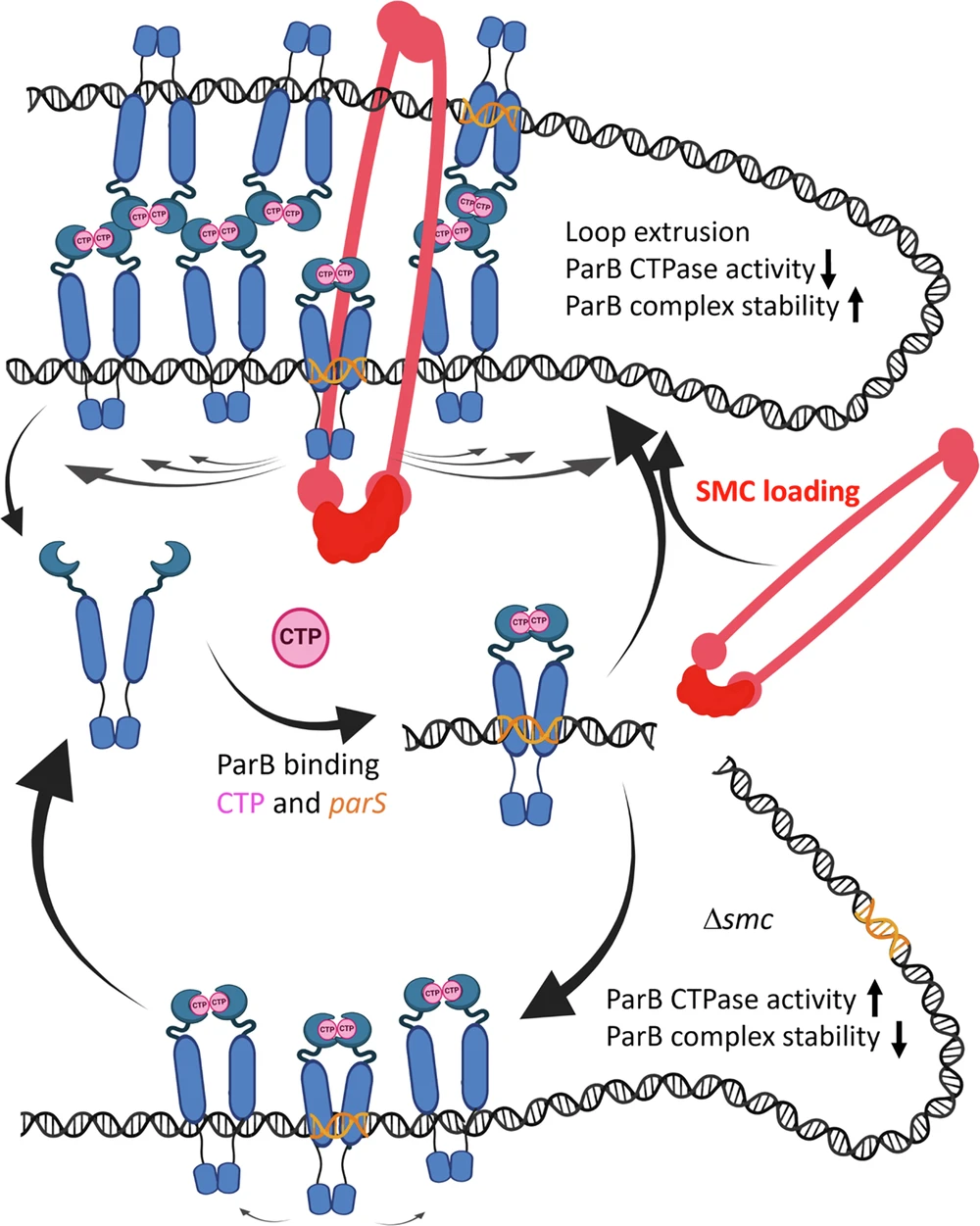
The article in Nature Communications
Scientists from our Faculty have published a paper titled “SMC modulates ParB engagement in segregation complexes in Streptomyces” in the prestigious journal Nature Communications.
The authors are Katarzyna Pawlikiewicz, dr Agnieszka Strzałka, Julia Duława-Kobeluszczyk, dr hab. Marcin J. Szafran, prof. dr hab. Dagmara Jakimowicz from the Department of Molecular Microbiology, and dr Michał Majkowski from the Laboratory of Advanced Imaging and Cytometry.
The publication presents the results of research on the mechanism of chromosome segregation in bacteria. Chromosome segregation is a key stage of the cell cycle, essential for accurate cell proliferation. Although this process has been intensively studied in many research centers for nearly 30 years, its mechanism remains not fully understood. Scientists continue to discover new and often unexpected properties of the proteins involved in this process, as well as additional factors that influence its course.
Studies on chromosome segregation in actinobacteria have for many years been one of the main research directions pursued at the Department of Molecular Microbiology. These studies employ advanced microscopy techniques, including high-resolution microscopy. Our most recent findings add another “piece to the puzzle,” bringing us closer to a comprehensive understanding of the molecular mechanisms underlying this fundamental biological process.
You can read the publication on the publisher’s website:
